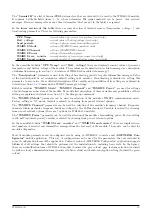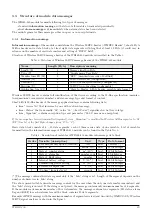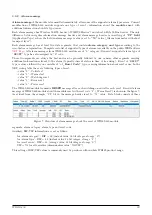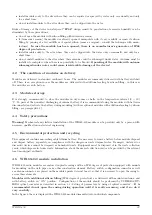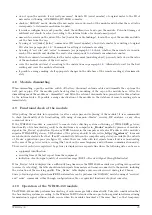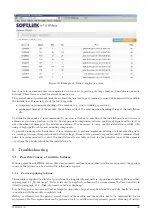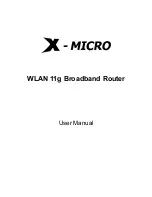
by unskilled person can cause irretrievable damage of the module. There are only top-quality batteries used in
the wacoSystem modules, that have been carefully selected and properly tested. In case of battery replacement by
user the new battery parameters should meet same technical requirements (type, capacity, voltage, current load,
auto-discharging current...) as the original battery. It is strongly recommended to use for replacement same type
of battery as used in production.
5.1.2
System failures
As
”
system failure” are considered mainly failures of module’s processor, memory, internal supplying or any other
failures that cause a complete breakdown of the device. If module’s battery has correct voltage with no signs
of discharging and the device still does not communicate through its configuration port and does not respond to
any commands and this status will not change even after module’s restart (by switching off and switching on its
battery), the system failure probably occur. Perform the replacement of the module according to the instructions
in paragraph
and check functionality of the new module. If the new device works properly, label the original
module as
”
defective” and fill in the appropriate documentation prescribed by internal rules for this case.
5.1.3
Transmitter and receiver failures
Transmitting of messages is signaled by flashing of red ”TXA” LED on the module’s printed circuit board. Flashing
of LED during broadcasting can be observed through the transparent casing of the module.
If the module is powered by correct voltage, the module communicates through the configuration port, responds
to the configuration commands but the radio-messages from the module are still not received steadily, the possible
reason of the trouble can be a failure of transmitting or receiving of radio signal. The typical indication of trans-
mitting or receiving failures is state of
”
partial” functionality, when there are repetitive breakdowns in reception
data from the module or occasional malfunctions of back channel (if implemented).
The ground of all above described troubles with communication could be unreliable radio-communication caused
by one of these reasons:
•
incorrect setting of transmitter parameters, mainly frequency channel, mode, or transmitting power;
•
permanent or occasional blocking of radio signal caused by construction works or any construction changes
within the premises, or by operation around the installation site (moving of machines, cars, etc.);
•
permanent, periodical or occasional interference (jamming) of radio signal from externel source (another radio
system in the same frequency band, or industrial disturbance);
•
low level of transmitting power caused by wrong setting or by failure of transmitter;
•
failure of receiver that causes malfunction of back channel;
•
damage of antenna or antenna cable (if external antenna used).
If above described indications of unreliable radio-communication become evident, proceed with troubleshooting of
the malfunctioning in following steps:
•
visually check surrounding of the installation site to find out if there are any changes that can influence radio
signal (e.g. new objects, things, machines...). If there are such negative circumstances, solve the trouble by
reorganization of the object or by redesign of radio network;
•
visually check an external antenna and antenna cable (if used), possibly replace these elements for the spare
ones with proven functionality;
•
check correctness of module settings, especially setting of radio parameters as described in paragraph
and perform the check of module overall functionality as described in paragraph
•
replace the module according to the paragraph
and perform the setting and check of overall functionality
off the new module after that;
•
if the module is not properly working even after its replacement for proven device and equipment, the trouble
can be caused by local interference (jamming) from external source. Another possible reason could be an
unsuitable setting of some configuration parameter that has not been discovered. In this case ask for your
supplier, producer, or other experienced person for some form of assistance.
Appropriate level of transmitting power can be checked by comparing of its signal strength with the reference
signal from another module (modules) under comparable circumstances, for example with using of signal analyzer
or testing receiver placed to the suitable spot. If the signal strength is similar to the signal of reference transmitter,
then the module’s transmitting power is adequate, and the reason of troubles could be in insufficient signal strength
on the receiving side. Attenuation of the signal can be caused by making of some change in module installation
site (e.g. turning of antenna or placing of some object nearby, installation of iron bars, rack or shelfs...) or similar
WB169-430
27



